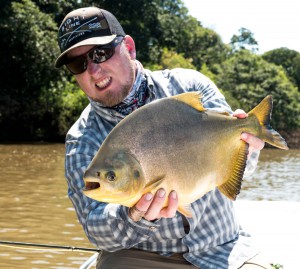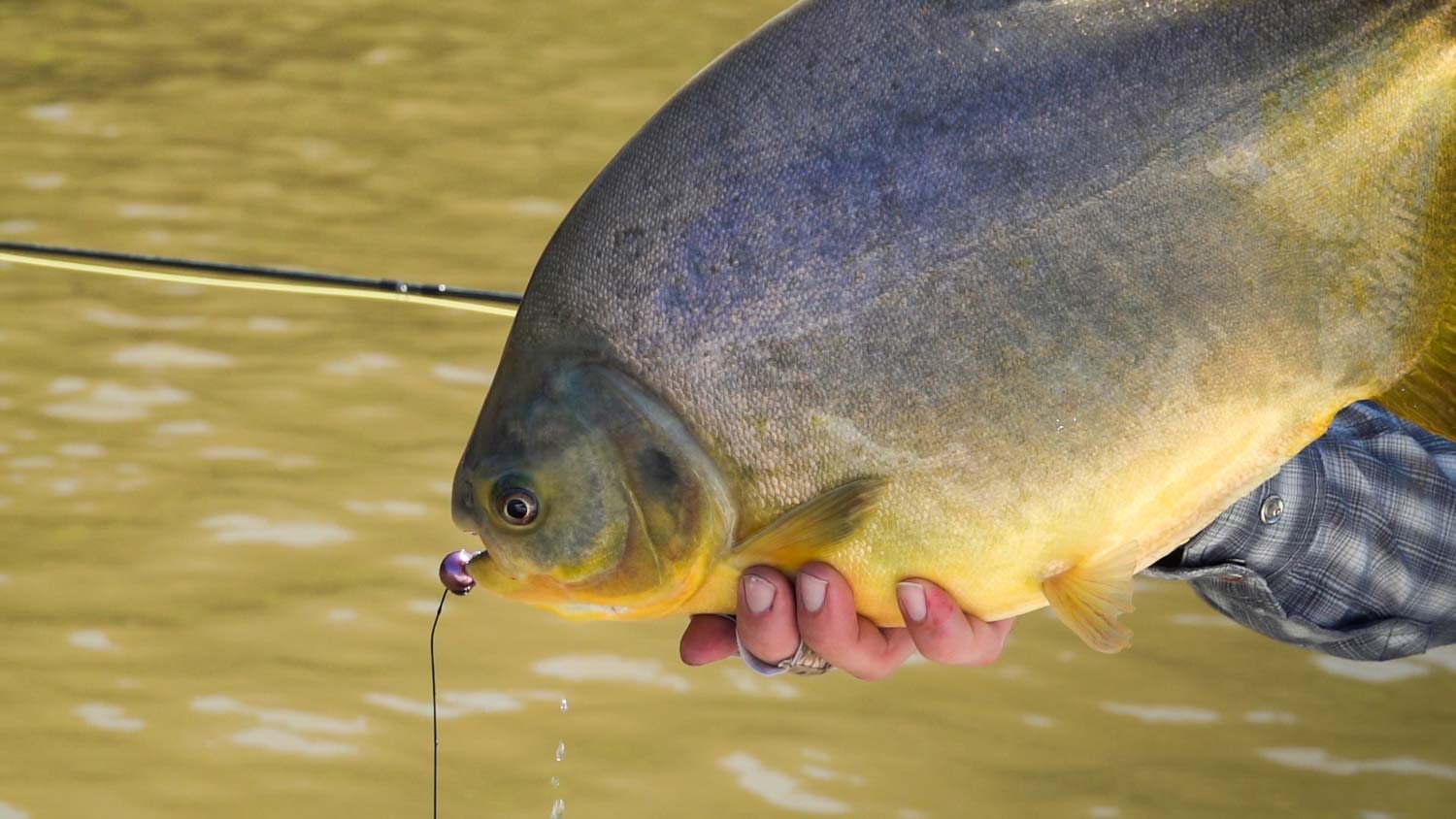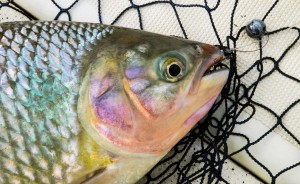By Louis Cahill
If you are a dry-fly purest, you might want to sit this one out.
Bead fishing in the jungles of Argentina is about as far from fishing a dry fly as you could imagine. It’s not much closer to Alaska bead fishing. It’s one of the most unorthodox and effective methods I’ve ever used to catch a fish. It’s also incredibly fun!
We travel to the jungle for golden dorado, but like many predatory fish, the dorado takes a long siesta during the middle of the day. Rather than pound the water pointlessly, we’ll take a couple of hours to catch some of the exotic species found in these rivers.
 The most popular is the pacu. These brawny fish are shaped like trashcan lids and put up a serious fight. They are sometimes called freshwater permit, mostly for their shape, but they are also picky eaters. They are omnivores but one of their chief food sources is actually fruit and nuts that fall from trees lining the river. They have teeth like a human for chewing these tough terrestrials.
The most popular is the pacu. These brawny fish are shaped like trashcan lids and put up a serious fight. They are sometimes called freshwater permit, mostly for their shape, but they are also picky eaters. They are omnivores but one of their chief food sources is actually fruit and nuts that fall from trees lining the river. They have teeth like a human for chewing these tough terrestrials.
So how to you target a fish that eats nuts?
 Well, not by wading, I can tell you that! (Sorry, that was too much to resist.) Seriously though, the Argentine guides have developed an ingenious way to imitate this unusual food source. They fish giant beads from the craft store. Beads up to three-quarters of an inch in diameter. They taper the hole on one side of the bead with a file and slide them right onto the hook, over the eye. The bend of the hook holds the bead on and, because of the tapered hole, the bead slides up the leader when the fish is hooked.
Well, not by wading, I can tell you that! (Sorry, that was too much to resist.) Seriously though, the Argentine guides have developed an ingenious way to imitate this unusual food source. They fish giant beads from the craft store. Beads up to three-quarters of an inch in diameter. They taper the hole on one side of the bead with a file and slide them right onto the hook, over the eye. The bend of the hook holds the bead on and, because of the tapered hole, the bead slides up the leader when the fish is hooked.
The crucial thing that makes the setup work is the cast.
If you don’t have your casting technique down you’ll never catch a fish. The trick is to cast a high arching loop so that the fly hits the water as straight down as possible, at a gentle speed. The result is a nice natural plop that sounds just like a nut or berry hitting the water. The cast doesn’t have to be especially accurate because the fish hear the plop and come looking for a meal.
This is especially effective when the water is stained and sight fishing is a challenge, for you and the fish. Once the cast is delivered, you simply watch your fly line for any sudden movements. When the line moves, you set the hook.
You’ve likely guessed that casting a heavy bead is a little tricky. It takes good timing and a bit of practice. Everyone hits themselves with the bead at least once. Once is plenty. But you get the hang of it quickly. If you make the trip to Argentina don’t miss the bead fishing. You can argue about whether or not it’s fly fishing but there is no doubt it’s a blast.
Louis Cahill Gink & Gasoline www.ginkandgasoline.com hookups@ginkandgasoline.com Sign Up For Our Weekly Newsletter!
Sign Up For Our Weekly Newsletter!



Interesting technique
Repurposing a wine cork into a round ball splitting it half way thru, forcing a hook into slit applying a bit of epoxy then different color nail polish and you also have a pacu fly. More labor but preparation enhances anticipation
Hi, I met the site today through a friend and I’m loving the stuff.
I would like to help by bringing a little correct information about this post about Pacu fishing.
Who developed the technique was a Brazilian guide named Cesar Palma, who together with Rogério Moraes in 2008, developed and refined the technique that was later disseminated in Alto Paraná.
If you talk to Pint of Dorados on the Fly, this can confirm you.
Thank you and big hug
Aurelio Martins
links with material on the technique and its development
http://diegoflorespesca.com/reportaje-a-cesar-palma-omnivoros-con-mosca-pacu-boga-y-pira-pita/
https://martimsl.wordpress.com/2009/02/23/a-descobertado-invento-ao-desafio-da-pesca/
https://martimsl.wordpress.com/2009/02/21/a-tecnica-de-uso-para-as-plockmartim/
Nobody cares who came up with it. We’re Americans, we travel the world and take whatever we want.
you may not care, but other people on the planet may want more information and be interested in the origin of innovative techniques that are created around the world
Americans … travel the world and take whatever we wan … but some readers may not be Americans
Are you the Donald from Palm Beach?